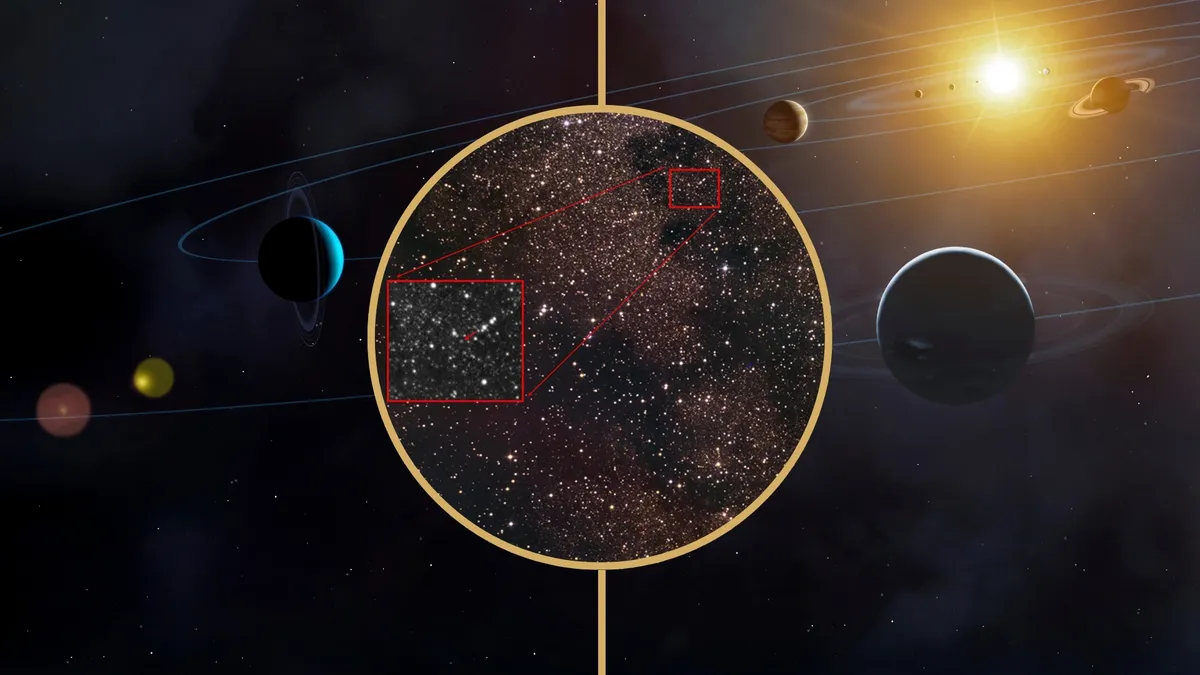
Astronomers have made a groundbreaking discovery: the confirmation of the third known interstellar object to enter our solar system, named 3I/ATLAS. The designation "3I" stands for "third interstellar," and it is officially classified as C/2025 N1 (ATLAS). This remarkable object was first identified on July 1, 2025, by the Deep Random Survey remote telescope located in Chile, which is part of the ATLAS (Asteroid Terrestrial-impact Last Alert System) project.
The discovery of 3I/ATLAS is not just significant; it represents a leap in our understanding of interstellar objects. Initially given the temporary designation A11pl3Z, 3I/ATLAS garnered immediate attention from the scientific community due to its unusual motion. Rapid follow-up observations and a reanalysis of previous data led to a preliminary conclusion: this object is not bound by the sun's gravity. If confirmed, it will be the third interstellar object identified, following 1I/'Oumuamua in 2017 and 2I/Borisov in 2019.
According to Mark Norris, a Senior Lecturer in Astronomy at the University of Central Lancashire, this discovery provides further evidence that interstellar wanderers are relatively common in our galaxy. Even more exciting is that 3I/ATLAS is the largest and brightest interstellar object known to date, offering scientists a unique opportunity to glean insights into the formation of star systems.
So, how do astronomers know that 3I/ATLAS is from another star system? The key lies in its trajectory. The object follows a highly hyperbolic orbit, indicating that it is not gravitationally bound to the sun. Its orbital path has an eccentricity of 6.2; any object with an eccentricity greater than 1 is on a path that does not loop back around the sun, suggesting it originates from interstellar space.
For context, the first known interstellar visitor, 1I/'Oumuamua, had an eccentricity of approximately 1.2, while 2I/Borisov came in at 3.6. 3I/ATLAS significantly outpaces both, reinforcing its classification as an interstellar object. Olivier Hainaut, an astronomer at the European Southern Observatory, clarified that while some long-period comets may exhibit hyperbolic trajectories, 3I/ATLAS is conclusively hyperbolic on its approach.
While 3I/ATLAS shares similarities with 1I/'Oumuamua and 2I/Borisov in that they are all classified as comets, there are notable differences. The most significant distinction is size; 3I/ATLAS measures approximately 15 kilometers (9 miles) in diameter, with some estimates suggesting it could be as wide as 20 kilometers (12 miles). In contrast, 1I/'Oumuamua was roughly 100 meters, and 2I/Borisov was less than 1 kilometer.
3I/ATLAS exhibits comet-like characteristics, as evident from the coma and tail observed shortly after its discovery. This earned it the additional designation of C/2025 N1 (ATLAS), which follows the naming convention for comets. Unlike 1I/'Oumuamua, which was primarily observed during its exit from the solar system, 3I/ATLAS provides more data for astronomers to analyze, helping to clarify its exact nature.
Currently, 3I/ATLAS is located within Jupiter's orbit, approximately 323 million miles (520 million kilometers) from Earth and 420 million miles (670 million kilometers) from the sun. It is expected to reach a proximity of about 167 million miles (270 million kilometers) from Earth on December 19, posing no threat whatsoever. The object will come even closer to Mars, at around 18 million miles (30 million kilometers) on October 2, and will reach its closest point to the sun, or perihelion, on October 29, traveling at an astonishing speed of about 42 miles (68 kilometers) per second.
Observing 3I/ATLAS requires specialized equipment and patience. Currently situated in the constellation Sagittarius, the object is low on the southern horizon from mid-northern latitudes. At a magnitude of 18.5, it is approximately 2.5 million times fainter than Polaris. To image 3I/ATLAS, astronomers need telescopes with apertures of at least 150-200 mm (6-8 inches) or even 400 mm (16 inches) for optical telescopes. While it is not visible to the naked eye, its brightness is expected to increase as it approaches Earth, potentially reaching a magnitude of 11.
As 3I/ATLAS approaches its bright perihelion, professional telescopes will capture numerous images of the object. Most large observatories, located in the Southern Hemisphere, will have prime viewing opportunities, and astronomers anticipate sharing new findings in the coming days and weeks. As this interstellar object is still under preliminary observation, more detailed studies are essential to understand its composition and trajectory.
Despite the many unknowns, 3I/ATLAS stands out due to its size, making it a prime candidate for further study. Interstellar objects like this one provide a tangible link to other star systems and contain chemical signatures that can enhance our understanding of planetary system formation. Professor Martin Barstow emphasized the potential breakthroughs that could arise from studying these objects, including evidence of life beyond our solar system.
Unfortunately, sending a spacecraft to intercept or fly by 3I/ATLAS is highly unlikely due to its rapid speed. A spacecraft would need to be prepped and ready for such a mission, which poses significant logistical challenges. The European Space Agency is currently developing its Comet Interceptor project, aiming for a launch in 2029 to explore intriguing comets. However, this mission might still struggle with the velocities of interstellar travelers like 3I/ATLAS.
The increase in discoveries of interstellar objects is not merely a coincidence; it reflects advancements in observational technology. The upcoming Vera C. Rubin Observatory is expected to significantly enhance our ability to detect interstellar objects like 3I/ATLAS during its decade-long Large Synoptic Survey Telescope (LSST) project. A 2020 study estimated that around seven interstellar objects might pass within one Earth-sun distance each year, indicating a treasure trove of discoveries awaiting us.
As we continue to enhance our observational capabilities, we can anticipate more discoveries, possibly leading to interstellar objects like 4I, 5I, and beyond. 3I/ATLAS may be the largest and brightest interstellar visitor, but it is almost certainly not the last.